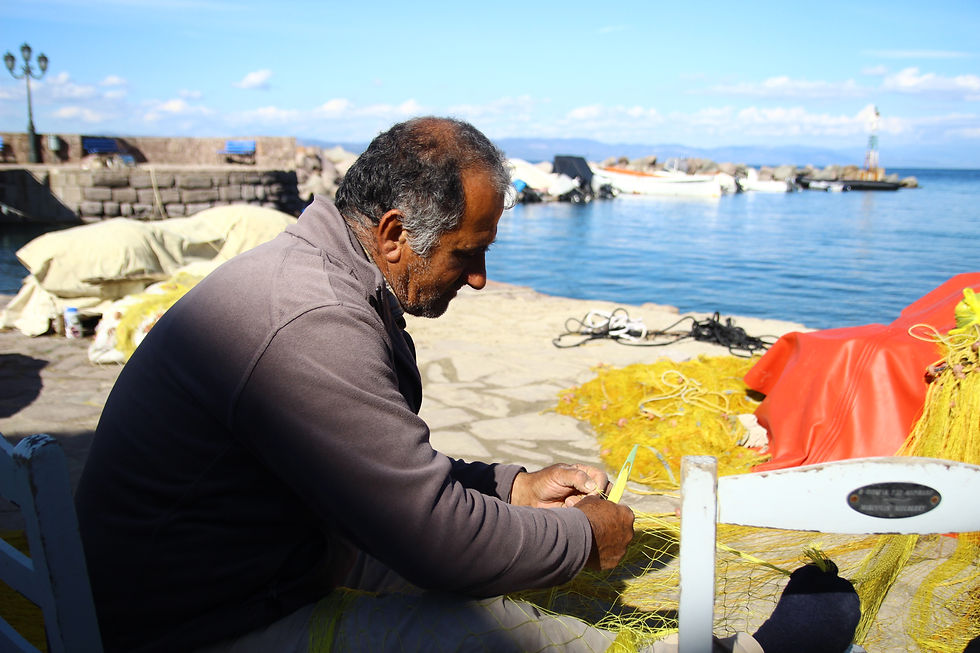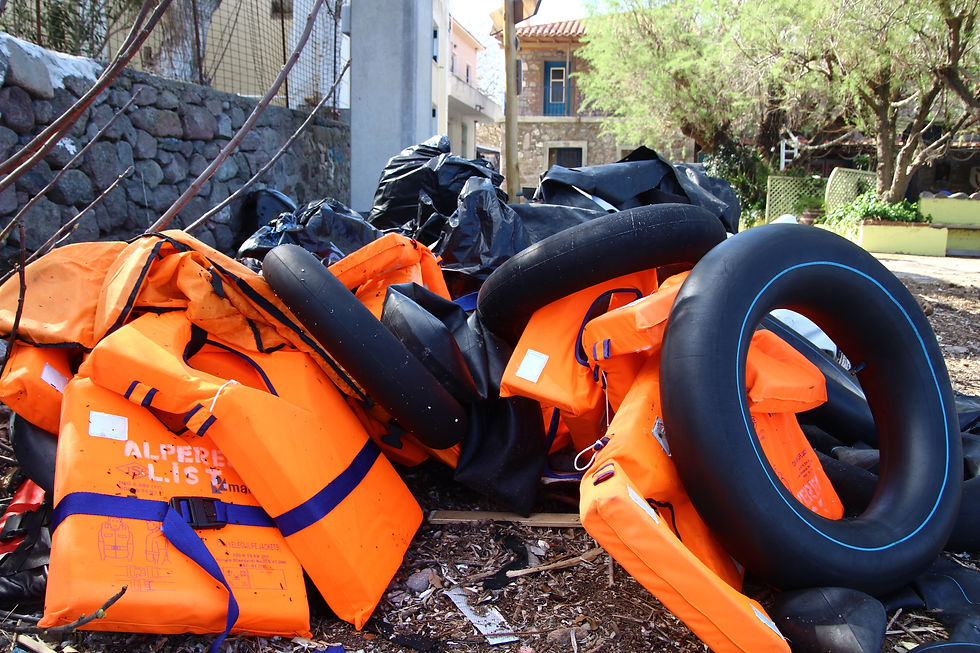Cleaning Lesvos one little piece of plastic at a time
- Melanie Wolowiec
- 13.3.2016
- 2 min käytetty lukemiseen
Friday was our second day on the ground - and as stereotypical as this might sound: those first two days felt like two weeks instead. While our first day here in Lesvos was more about getting a first impression of the island and the locals, on Friday we had the first opportunity to physically LIFT life jackets and other waste from the beaches. We woke up early in the morning to drive to the small village of Skala Sikaminias. This little fishermen’s village at the Northernmost point of Lesvos was so picturesque and peaceful, that it resembled 100% our image of a typical Greek village. Cats were strolling the narrow, curvy paths, Greek folk music was constantly playing from one of the houses, and families were enjoying their Friday afternoon in one of the tavernas on the edge of the dock, next to the local fishermen weaving their nets with utmost diligence.

Our team met with Henry, who is one of the co-founders of the NGO Lighthouse Relief. Apart from running a refugee camp right outside the village and working in Moria Camp, Lighthouse seems to have good relations with the local people and tries to clean up the environment from the waste that was piling up over the course of the past few months. So we all put on our wetsuits (all generous donations to Lighthouse Relief) and went into the waters of the Aegean Sea. We didn’t have to walk far along the rocky and slippery shore until we found first traces of what is happening in this place. At first you see piles of wood, rubber dinghies, life jackets. Once you get a closer look you find more personal items that are a proof of the existence of this humanitarian crisis: bottles of water, baby diapers, t-shirts, toothbrushes. Within only two hours we were able to fill up the large dinghy we took with us. With every piece of plastic I picked up and put into the trash bag, I got angrier. This artificial material is such an alien element in the beauty of the natural environment. I didn’t even dare to think about the humongous piles of plastic trash out in the oceans and the impact it has on the environment.


Back in the village we unloaded the trash from the dinghy, which would later be picked up by the local authorities. Since the dinghy we used wouldn’t survive another cleanup trip, we decided to disjoint it and use the material for some prototyping. With a simple knife we cut through the sturdy rubber material and tried to separate the various components, so that we could study it for our project.
At the end of that day we were not only physically exhausted, but also exhausted by all the impressions we got. The drive back home certainly helped us to process our thoughts and feelings. Being on the ground and finally do the things that we had been talking about in the months before our trip was very rewarding, but also an experience that we certainly won’t forget easily.




Kommentit